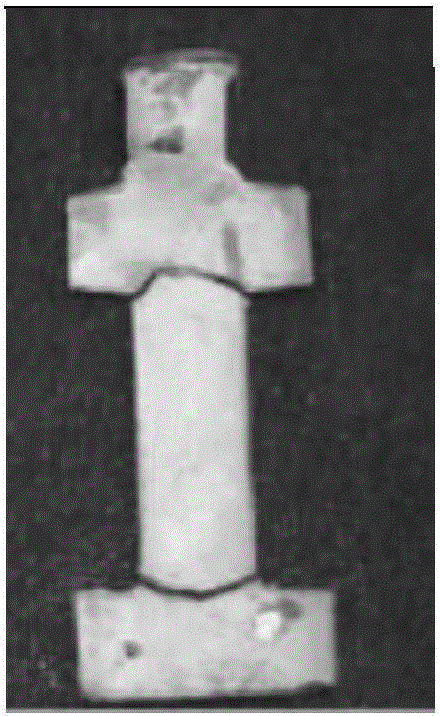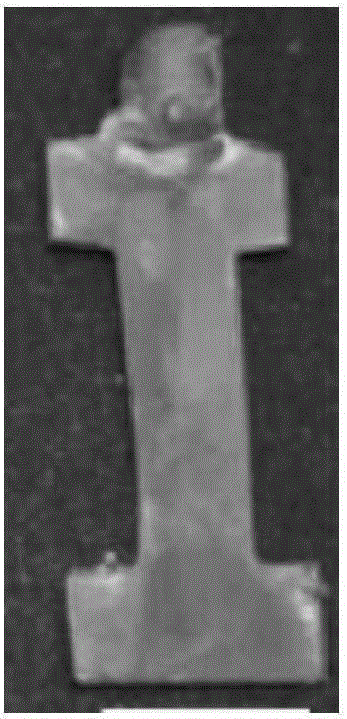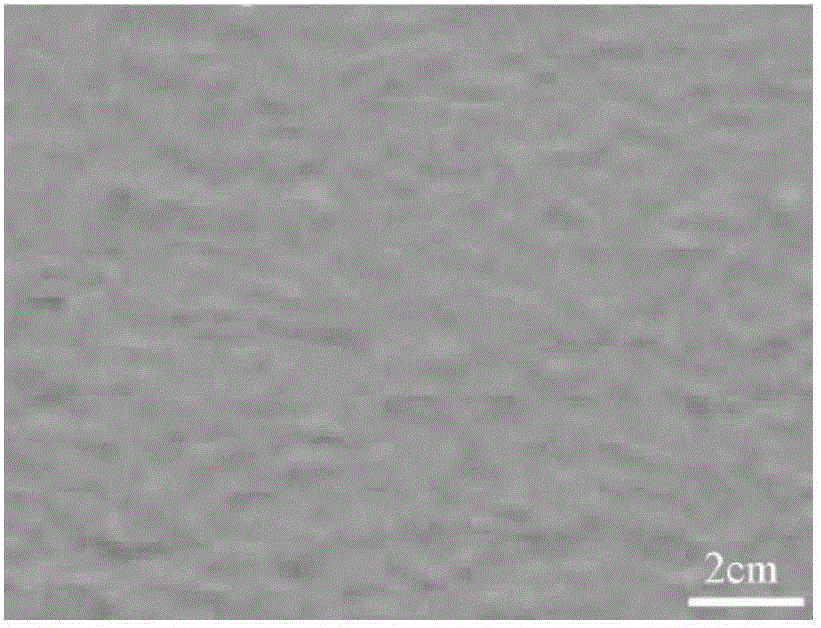Method for improving deformability of oxide ceramic shells precisely cast by titanium-aluminum alloy
An oxide ceramic and precision casting technology, applied in the field of titanium aluminum alloy precision casting, can solve problems such as titanium aluminum alloy cracks, and achieve the effects of increasing toughness, reducing the tendency of casting defects, and improving collapsibility.
- Summary
- Abstract
- Description
- Claims
- Application Information
AI Technical Summary
Problems solved by technology
Method used
Image
Examples
example 1
[0032] Winding polypropylene filament during the preparation of example 1 type shell
[0033] After the surface shell is dried, polypropylene filaments with a width of 0.3-1 mm and a thickness of 0.2-0.8 mm are evenly wound on the surface of the shell during the process of coating and hanging the back shell. The distance between wires during winding should be determined by the actual shape of the shell, but the gap should be greater than 3mm and less than 12mm, single-layer winding. After the winding is completed, paste, hang sand and dry.
[0034] The titanium-aluminum alloy precision casting back layer is coated with a total of 6 to 8 layers, and the polypropylene is continued to be wound according to the above method during the preparation of the remaining back layer, and the total number of winding layers is not more than 5 layers.
example 2
[0035] Example 2 prepares the back layer slurry containing graphite powder
[0036] The main components of the back layer slurry are coal gangue powder and silica sol, and the powder-to-liquid ratio is 3:1. The graphite powder accounts for 1% to 4% of the total weight of the paint, and the particle size of the graphite powder is 60 to 100 mesh. Accounting for 0.01% to 0.03% of defoaming agent n-butanol and 0.02% to 0.05% of wetting agent fatty alcohol polyoxyethylene ether.
[0037] Preparation process: first add the corresponding silica sol glue, after stirring, add the wetting agent fatty alcohol polyoxyethylene ether, then add the corresponding amount of coal gangue powder and graphite powder, stir evenly, then add the defoamer n-butanol.
[0038] After the back layer paint is evenly stirred with a mixing bucket for 24 hours, its viscosity should be about 10S to 30S. If the viscosity is too high, add an appropriate amount of silica sol, and if the viscosity is too low, a...
example 3
[0039] Example 3 type shell roasting and testing
[0040] After the mold shell is prepared, dewaxing and roasting are carried out. The roasting temperature is 900°C-1050°C and the time is 2h-5h. Concession, image 3 The cross-sectional morphology of the shell prepared by the traditional process, Figure 4 The cross-sectional morphology of the shell prepared for the present invention.
[0041] By carrying out the mold shell flexural strength test on the Instron-550 type universal material testing machine, the strength of the mold shell prepared by the test result surface after roasting will be 16% lower than the mold shell prepared by the traditional silica sol process, and the traditional mold shell is dry. The strength is 0.06MPa, while the dry strength of the shell prepared by the present invention is only 0.05MPa. This is because after high-temperature roasting, polypropylene and graphite powder form pores after burning, which reduces the strength and improves the coll...
PUM
| Property | Measurement | Unit |
|---|---|---|
| width | aaaaa | aaaaa |
| thickness | aaaaa | aaaaa |
| particle size | aaaaa | aaaaa |
Abstract
Description
Claims
Application Information
 Login to View More
Login to View More - R&D
- Intellectual Property
- Life Sciences
- Materials
- Tech Scout
- Unparalleled Data Quality
- Higher Quality Content
- 60% Fewer Hallucinations
Browse by: Latest US Patents, China's latest patents, Technical Efficacy Thesaurus, Application Domain, Technology Topic, Popular Technical Reports.
© 2025 PatSnap. All rights reserved.Legal|Privacy policy|Modern Slavery Act Transparency Statement|Sitemap|About US| Contact US: help@patsnap.com



